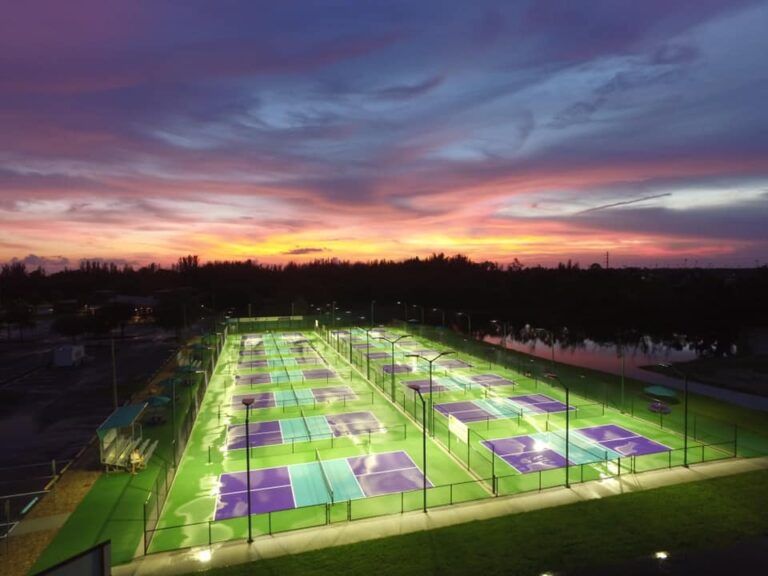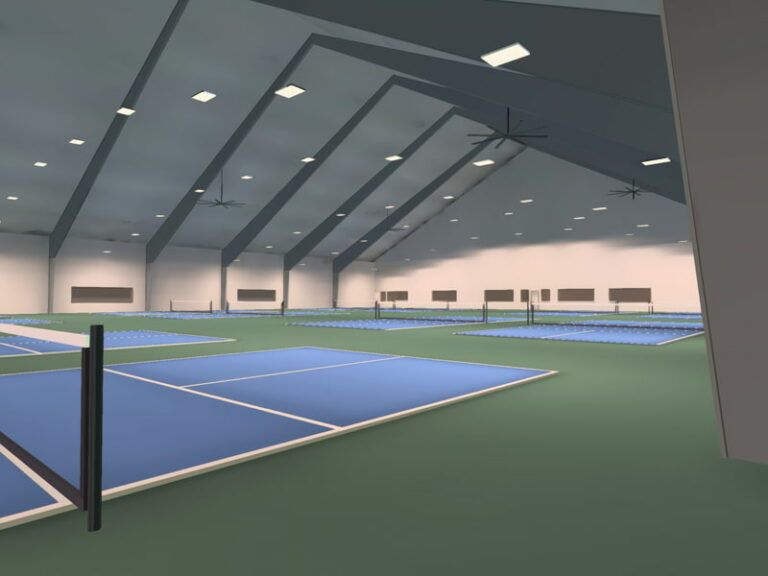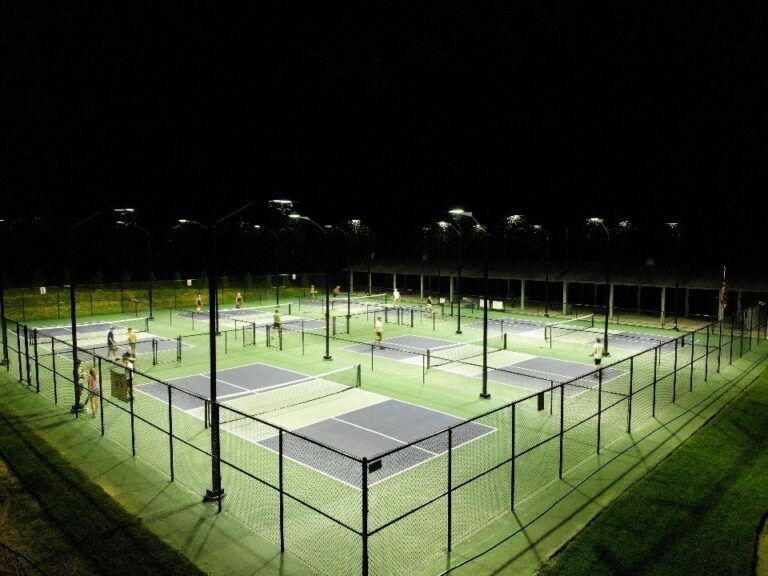Why Proper Lighting Matters for Pickleball Courts
Ensuring Player Safety and Preventing Injuries
Adequate lighting on pickleball courts is a fundamental requirement for ensuring player safety. Poor visibility can lead to accidents, resulting in injuries from tripping, falling, or misjudging the ball’s position. This risk is accentuated in low-light conditions, hence the necessity for compliance with established lighting standards. In various studies, it has been shown that well-lit sports environments not only prevent injuries but also enhance player confidence. By illuminating the playing area effectively, players can make quicker and more accurate decisions, minimizing the chances of mishaps.

Extending Playtime: Day or Night
The versatility that comes with proper lighting enables players to enjoy the game during evenings or early mornings, thus increasing flexibility in scheduling matches. Imagine being able to participate in a friendly game after a long day at work or host local tournaments that run into the night. This added convenience not only supports a thriving pickleball community but also promotes the sport's growth by accommodating varying player schedules and lifestyles.
Enhancing the Overall Game Experience
Effective lighting enhances not only visibility but also the overall competitive atmosphere of the game. Players can better judge the position of the ball, gauge distances accurately, and react swiftly during play. A well-lit environment creates a more enjoyable and engaging experience, making it appealing for both players and spectators alike. As the popularity of pickleball continues to grow, investing in quality lighting becomes critical to maintaining an engaging atmosphere that keeps players coming back for more.
Understanding Pickleball Court Lighting Standards and Guidelines
Overview of Official Requirements and Recommendations
Understanding the various standards set forth by the USA Pickleball Association is crucial in designing a court that meets competitive play requirements. The minimum footcandle recommendations range between 30 to 75 fc, ensuring adequate visibility regardless of the level of play. Additionally, uniformity is vital to prevent shadows and glare. The max/min ratio should ideally be 2.0 or less, which applies to recreational and intermediate matches, ensuring consistent visibility across the court.

Levels of Play and Lighting Requirements
The lighting needs differ based on the level of competition. For example:
| Class | Horizontal Illumination (Lux) | Vertical Illumination (Lux) |
|---|---|---|
| Class I (Professional) | 750 | 450 |
| Class II (Club Competitions) | 500 | 350 |
| Class III (Recreational) | 300 | 200 |
The varying levels of light required highlight the importance of tailoring your lighting design to fit the specific gameplay environment.
Exploring LED Lighting Technology for Pickleball Courts
Benefits of LED Lighting: Efficiency, Longevity, and Durability
In recent years, LED technology has emerged as the preferred choice for illuminating pickleball courts, thanks to its numerous advantages over traditional lighting options. One of the most notable benefits is energy efficiency; LED lights consume less power while providing superior luminosity. Additionally, the lifespan of LED fixtures can extend up to 200,000 hours, significantly reducing the frequency of bulb replacements. Their durability also makes them resistant to shocks and vibrations, ideal for an active sports environment.

Advanced Optics and Control Systems
Modern LED light fixtures often come equipped with advanced optics, allowing for the precise direction of light output. This technology means extensive aiming and tilting are generally unnecessary, resulting in a clean and uniform light distribution. Moreover, integrating smart control systems can optimize energy usage through scheduling features, photocells, and motion sensors, thereby reducing energy costs while ensuring the court remains well-lit when needed.
Optimal Light Placement and Pole Height
Recommended Light Pole Height
Determining the ideal height for light poles is vital for providing comprehensive illumination across the court. The recommended height is typically between 20 to 30 feet, allowing for clear visibility of the ball, especially during high arcs. For facilities hosting multiple courts, strategic placement becomes even more critical to maintain uniform light intensity.

Minimizing Glare and Shadows
It's crucial to place lights on the sides of the court rather than directly overhead to mitigate the risk of glare, which can disrupt gameplay. Utilizing LED shielding effectively can counteract this issue, as well as balancing direct and indirect lighting approaches to achieve optimal illumination.
Achieving Lighting Uniformity and Reducing Glare
Importance of Even Light Distribution
Uniform light distribution enhances player performance by preventing dark spots across the court. Studies have shown that maintaining consistent visibility is essential for minimizing distractions and ensuring an enjoyable playing experience. As mentioned previously, a maximum/minimum ratio of 2.0 or less is recommended to achieve this uniformity.
Strategies for Glare Reduction
To combat glare, various methods can be implemented including the use of individual LED shielding, proper fixture placement, and a combination of direct and indirect lighting techniques. These strategies collectively contribute to creating an optimal playing environment where visibility is maximized.
Navigating Local Ordinances and Ensuring Compliance
Understanding Light Pollution and Light Trespass
In the quest for effective lighting, understanding local laws regarding light pollution and light trespass is essential. Many municipalities have adopted regulations to mitigate these concerns, such as the use of full cutoff fixtures to ensure compliance with dark sky initiatives. Shielding options whether partial, full, or backlight can be integrated into your design to manage light trespass effectively.
Pole Height Restrictions and Wind Speed Requirements
Additionally, it's critical to be aware of any local limitations regarding pole height, as these can vary significantly. Ensuring that structures can withstand high wind speeds is crucial for the safety and longevity of the lighting system.
Maximizing Energy Efficiency and Cost Savings
Energy-Efficient Lighting Solutions
Investing in energy-efficient lighting solutions offers substantial long-term cost savings. By switching from traditional lights to LED options, facilities can significantly reduce their energy consumption. With the added durability of LED lights, expenses related to replacements and repairs diminish over time.
Smart Control Systems for Energy Management
Implementing smart control systems further enhances energy management. Features such as scheduling, photocells that adjust based on ambient light, and motion sensors help maintain optimal usage of lights, thereby prolonging their lifespan and preserving energy.
Two-Pole vs. Four-Pole Lighting Systems: Which is Right for You?
Advantages and Disadvantages of Two-Pole Systems
Two-pole systems can be appealing for their cost-effectiveness and ease of installation. However, they come with potential drawbacks such as the risk of shadows and uneven lighting across the court.
Advantages and Disadvantages of Four-Pole Systems
On the other hand, four-pole lighting systems tend to provide balanced and even lighting, greatly enhancing visibility for players. While this system carries a higher upfront cost and requires more space, the benefits in play quality are significant, making them a popular choice for serious pickleball venues.
Step-by-Step Guide to Installation and Maintenance
Professional Installation and Design
Engaging qualified professionals for the installation of your lighting system is essential to ensure compliance with all standards. Experts can offer insights on optimal design strategies and installation techniques that prioritize both aesthetic appeal and functionality.
Maintenance Tips for Longevity
Maintaining your lighting system is equally important. Regular cleaning and inspections help keep the fixtures operating at optimal levels. Checking wiring and connections frequently and replacing bulbs as needed can extend the lifespan of the lighting system significantly.
Spotlight on Specific Lighting Products and Solutions
NGU’s LumaSport 16
One notable product that stands out is NGU's LumaSport 16 lighting fixture. This advanced option is particularly well-suited for large outdoor lighting applications and reinforces effective illumination strategies.
LSI's Zone Pickleball Fixtures
LSI's Zone Pickleball fixtures further exemplify quality with features tailored specifically for pickleball courts. Their diverse sizing and application options make them versatile choices for various facility layouts. Additionally, their online create-a-court design selector tool allows for customized lighting solutions to match specific court dimensions and requirements.
APTA Sports Lights
APTA's sports lights demonstrate compatibility with USA Pickleball Association standards, ensuring that players benefit from durable fixtures designed to withstand the rigors of the sport. Their weather-resistance features make them ideal for outdoor settings.
Indoor vs. Outdoor Pickleball Court Lighting: Unique Considerations
Lighting Solutions for Outdoor Courts
For outdoor courts, pole-mounted LED lights equipped with advanced optics are recommended to minimize shadows and ensure even illumination. With outdoor courts subject to various environmental conditions, selecting high-quality fixtures becomes critical.
Lighting Solutions for Indoor Courts
Conversely, indoor pickleball courts benefit from ceiling-mounted LED lights that offer uniform distribution. Achieving a balance between brightness and glare is essential, necessitating the integration of both direct and indirect lighting fixtures for optimal results.
Conclusion: Illuminate Your Game with the Right Lighting
In summary, the significance of proper pickleball court lighting cannot be emphasized enough. From enhancing player safety to improving the overall game experience, investing in quality lighting solutions is a decision that pays long-term dividends. By adhering to established standards and embracing modern technologies, you can create an optimal environment for both players and spectators. Make informed choices, embrace innovation, and elevate your gameplay with the right lighting solutions.










